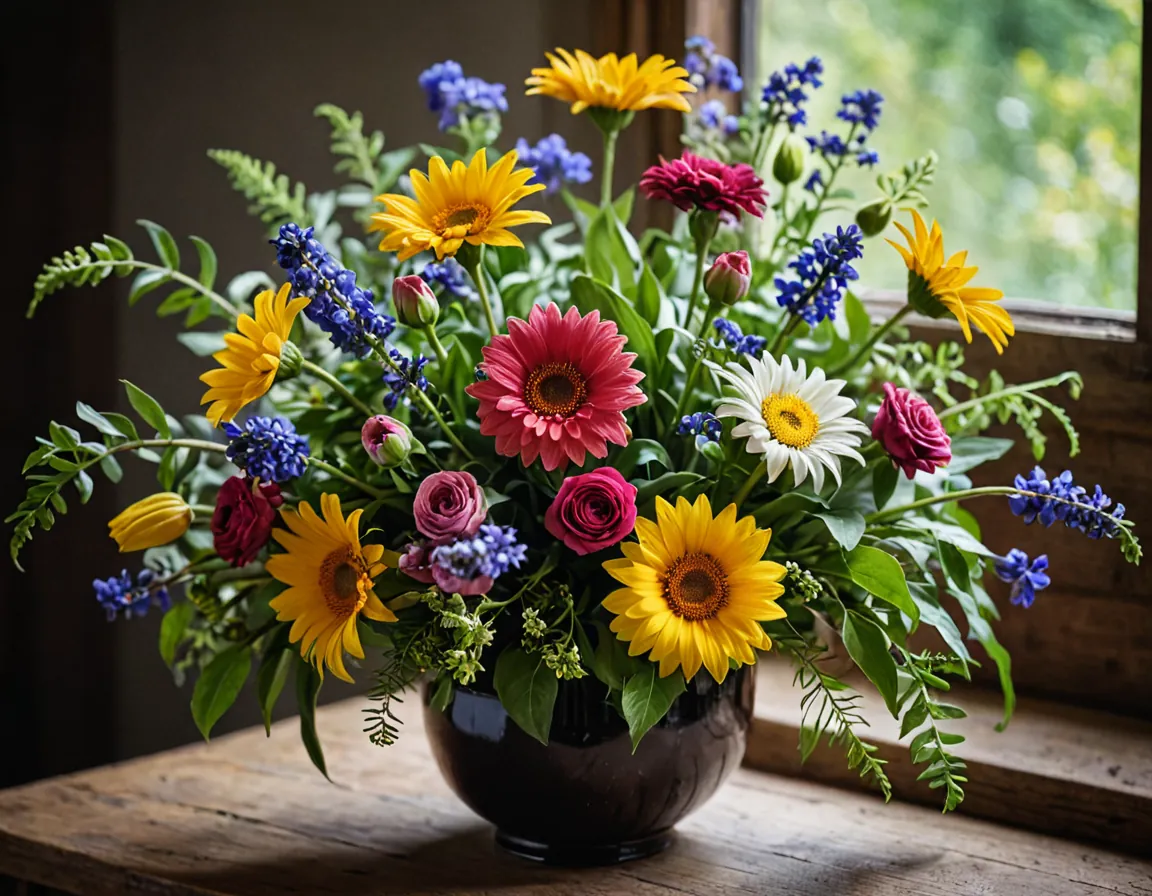Summer is a season of vibrant colors, warm weather, and blooming flowers. Creating beautiful flower arrangements during this time can bring joy and a touch of nature to any space. This article will provide an overview of summer flower arrangements, including their history, importance, and general tips for creating stunning displays. Let’s dive in!
Table of Contents
- History of Flower Arrangements
- Importance of Flower Arrangements
- Popular Summer Flowers
- Tips for Creating Summer Flower Arrangements
- FAQs
History of Flower Arrangements
Flower arranging is an ancient art that dates back to ancient Egypt, Greece, and Rome.
Historical Highlights:
| Period | Key Points |
|---|---|
| Ancient Egypt | Flowers were used in temples and to honor the dead. |
| Ancient Greece | Flowers were used in garlands and wreaths for celebrations. |
| Roman Empire | Flower arrangements were used for decorations during feasts and events. |
Flower arranging became more sophisticated in the 16th and 17th centuries in Europe, with the Dutch creating elaborate floral still-life paintings. The Victorian era brought a new level of artistry and symbolism to flower arrangements, with each flower conveying specific meanings.
Importance of Flower Arrangements
Flower arrangements serve various purposes, including:
Key Importance:
| Purpose | Description |
|---|---|
| Aesthetic Appeal | Enhances the beauty of spaces, making them more inviting and pleasant. |
| Emotional Impact | Flowers can uplift moods, reduce stress, and convey emotions like love, sympathy, and joy. |
| Cultural Significance | Used in ceremonies, traditions, and rituals across different cultures. |
| Environmental Benefits | Fresh flowers improve air quality and bring a touch of nature indoors. |
Popular Summer Flowers
Summer is the perfect time to explore a wide range of colorful and fragrant flowers. Here are some popular choices:
| Flower | Description | Color Options |
|---|---|---|
| Sunflowers | Large, bright blooms that follow the sun. | Yellow, orange |
| Roses | Classic and timeless, available in many varieties. | Red, pink, white, yellow |
| Daisies | Simple and cheerful, ideal for casual arrangements. | White, yellow, pink |
| Lilies | Elegant and fragrant, perfect for centerpieces. | White, orange, pink, yellow |
| Zinnias | Vibrant and long-lasting, great for outdoor displays. | Red, pink, orange, purple |
Tips for Creating Summer Flower Arrangements
Creating stunning flower arrangements is both an art and a science. Here are some practical tips to help you get started:
General Tips:
- Choose Fresh Flowers: Select flowers that are in season and look healthy.
- Use a Variety of Colors and Textures: Mix different flowers to create visual interest.
- Cut Stems at an Angle: This helps flowers absorb more water and stay fresh longer.
- Remove Leaves Below Water Level: Prevents bacterial growth in the water.
- Use Floral Foam or Tape: Helps secure flowers in place for more structured arrangements.
Arrangement Ideas:
| Arrangement Type | Description |
|---|---|
| Bouquet | A hand-tied collection of flowers, perfect for gifts or table displays. |
| Centerpiece | A focal point for dining tables, using a mix of tall and short flowers. |
| Wreath | A circular arrangement, ideal for doors or as wall decor. |
| Single Flower Display | A minimalist approach, showcasing the beauty of a single flower. |
FAQs
Q: How often should I change the water in my flower arrangements?
A: Change the water every 2-3 days to keep your flowers fresh.
Q: Can I use any container for my flower arrangements?
A: Yes, you can get creative with containers, but ensure they are clean and can hold water without leaking.
Q: How can I prolong the life of my flower arrangements?
A: Keep them in a cool place, away from direct sunlight and heat sources. Use floral preservatives if available.
Conclusion
Summer flower arrangements are a delightful way to bring the beauty and freshness of the season into your home. With a bit of creativity and the right flowers, you can create stunning displays that will brighten any space. Happy arranging!
For more flower arrangement ideas and tips, visit Flowervibes.net.
